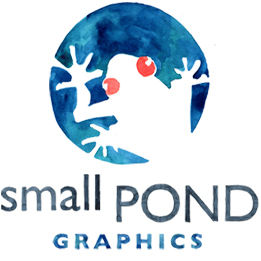“Blush of Spring”
Welcome, Spring. It’s lovely to see you again.

There’s no better day to think about the color GREEN than St. Patrick’s Day, of course! From the renewal of spring to the warmth of tropical waters, the color green brings a calming influence to this upsized color month journey and to design color palettes. All colors carry unspoken messages based on cultural influences, historical references and even our own bodies’ physical reactions. Let’s look at what the color green communicates.
GENERAL IMPRESSIONS:
Green is one of the most prevalent colors found in nature and offers one of the widest arrays of approachable choices in the spectrum. Because it is linked to so many various shades in nature, multiple tones of green are rarely perceived to “clash” with one another. Abundance in the natural world gives the color a near universal appeal and very strong positive associations. This prevalence allows green to be used almost like a neutral in many color palettes, serving various roles from a grounding undertone to a calming influence to a striking counterpoint.
COLOR VARIATIONS:
The many shades and hues of green offer varying associations that can appeal to nearly any audience. Blue green tones almost always elicit a pleasant response from viewers because they are so closely related to earth and sky. These colors are perceived as clean and cool, but also warm like the tropical waters they evoke. Blue greens are typically very soothing and are flattering to most skin tones. Lighter mint greens are seen as refreshing and easily invoke sweet thoughts of chocolate and the taste of mint leaves. While brighter greens generally connote renewal by embodying spring, fresh grass and leaf buds, deeper greens are often associated with the mysterious silence of deep forests. Both call to mind refreshing scents, but the associations with deeper greens expand to suggest prestige, security and trustworthiness because of their use in American money.
Among the lesser-used greens, bright emerald signifies elegance and is also strongly associated with the Irish heritage. Yellow-greens can be used effectively for projects related to gardening or florals because they resemble new growth. The sharper tone of chartreuse is perceived as trendy and an attention-getter that gives a youthful feel appealing to children and teens. Olive tones can be seen as up-scale but sometimes require stronger colors companions to pull them away from a staid neutral role.
NEGATIVE ASSOCIATIONS:
Among green’s negative associations, it is sometimes used in cultural terminology to represent jealousy, envy or inexperience. In addition, some shades of yellow-green are actually associated with nausea and illness, and create adverse reactions.
Overall, the design possibilities of the color green seem almost as endless as the various shades we see outside our window. It has obvious environmental appeal as well positive concepts like cleanliness, growth and reliability. Personally, I like green’s ability to shift from that reliability right into an added kick of excitement with only a touch of blue or yellow added to the mix. And, of course, you know any small pond dweller has to appreciate a few green frogs. Enjoy wearing green today!
A few weeks ago I had one of those experiences with my children that stuck with me. It was a moment I’ve been pondering for a while, knowing I needed to take it to heart, to glean from it–a moment I knew was important and profound in its simplicity.
Little Drummer Boy was in bed. As I was closing the Transformer book and pulling the blankets closer around him, he inquired (as only a 5-year-old can), “Mommy, while you’re rubbing my back, can I ask you some questions?”
Can I ask you some questions? It was such a simple request, but there was also such a look of anticipation on his face that it stopped me. Normally at this time of night I might have told him to wait, or reminded about bedtime or even warned about waking up his brother. But, there was something about his face. This was important to him. This was something special to him. So I said yes.
How could I say no to that opportunity after all? He had a smile on his face in the request. He had a look of excitement when I said yes. Then, I could see him thinking, his little mind processing and scanning. It dawned on me that Little Drummer Boy didn’t have a burning question on the tip of his tongue. He was searching his mind for his best inquisitive response. On the fly. He just wanted the opportunity to ask.
So, I took the opportunity to answer. I honestly don’t even remember what the questions were. Except, I remember they were wholly ordinary–at least for an inquisitive, car chase-loving, story-telling five-year-old wonder. They were burning inquisitions like “what makes the water hot when you turn the faucet?” or “where did that picture on the wall come from?” or “when will we get to go to the zoo again?”. They were all the voices of his uncensored thoughts, the stream-of-consciousness of boyhood.
The haphazard responding and clear confirmations that Mommy does not, indeed, remember everything she may have ever learned about science and/or the animal kingdom, and that she most certainly doesn’t have all the answers (at least not the correct ones) may be a subject for another post, but the process also brought to mind my own burning question…. Why don’t I do this every night?
In the rush to teach and impart, how often do I shush those seemingly random questions–the ones that belie the much greater underlying truths of love and security and acceptance? In the journey of parenthood–in the journey of everything–I sometimes spend so much time having something to say, be it teaching, reminding, cajoling, distracting, correcting, admonishing, sharing or instructing, that I forget what a blessing it is to have something to hear.
Sometimes I spend all my time looking for the opportunity to speak, to talk to someone, to impart information. To influence. To offer my own point of view.
Sometimes the greatest opportunity is the one to listen.
And so I did on that night. I relished taking the opportunity to give Little Drummer Boy a simple gift–one so easy to give it’s almost embarrassing how often I withhold it. It was the gift of sending him off to sleep knowing he’d been heard. Knowing he had an audience of one. And a standing ovation. The gift of time. A listening ear. An easy explanation. Or a hard one.
“Can I ask you some questions?”
Translation…
Can I talk?
About anything I want?
Can I tell you what I’m thinking about?
Do you care what I think is silly?
Do you know what I think is confusing?
Can I show you my heart?
Are you interested?
Will you explain something?
Will you give me your undivided attention?
Will you listen?
Will you answer?
Am I important?
Do I matter?
Magee, MS
I have to know. Don’t you?
You know, sometimes the unexpected messages created by signage in our landscape just makes me laugh. It happens haphazardly with the simple proximity of mixed messages. We train ourselves to view each messaged sign separately, but sometimes they inadvertently overlap. Mixed message: Come and see. Only, don’t park to do it.
The blue skies of Spring are beginning to take over the gray more consistently where I live. There’s something about a cloudless blue sky that gives me a sense of clarity. Continuing with my bonus color month, what other subtle messages are delivered with the color blue?
GENERAL IMPRESSIONS:
We often perceive the color blue as a constant in our lives because of its association with sky and water, and it serves as the calming agent among the primary colors. From deep navy and bright royal to blended teals and periwinkles, hues in the blue family offer a diverse, but calm, cool and collected palette. Because much of the earth is blue in the form of sky and sea, the color generally inspires confidence and reliability. Blue is appealing to both men and women almost equally, although men often report it as their most preferred color.
Blue almost universally symbolizes reliability, dependability and trustworthiness — hence the term, “true blue.” Physically, there is also evidence that seeing blue triggers the release of a tranquilizing chemical in the brain, producing a physical sensation of rest and calm. Generally, people report greater productivity and less anxiety when working in blue rooms, and exposure to the color has been shown to lower heart rate and body temperature. Therefore, basic blues often promote good mental concentration.
COLOR VARIATIONS:
Navy blue is perhaps the most serious in the color family and the shade most closely associated with power. Generally, darkening a color by moving the hue towards black infuses it with additional power. Thus, navy is synonymous with authority and credibility, but is also more approachable and friendly than straight black. The brightness of brilliant or electric blues shift the color away from more sedate versions. They lend a dynamic and exhilarating tone, and tend to engage the viewer more than calmer, traditional blues. Periwinkle blues have a warmer undertone that emanates from the purple used to mix them and are often seen as more playful and energetic. Teal blues are associated with a more upscale look, indicating rich and unique qualities. This version of blue is the least gender-specific and equally appeals to both men and women. Turquoise blue was named the color of the year in 2010 by Pantone, the company responsible for the print-industry standard color matching system. The color of the year represents the most prominent color trend viewed across multiple design disciplines where color palettes most effect marketing or merchandising success. Pantone describes the color as an “inviting, luminous hue inspiring thoughts of soothing, tropical waters.”
NEGATIVE ASSOCIATIONS:
Although shades of blue have universal appeal because of their association with Earth’s core water elements, it does have negative associations when applied to food. There are only a handful of blue tones present in food found in nature, and the color tends to create an appetite aversion.
Are you looking at blue skies today?
![]()
 Hello & welcome! I’m Haley Montgomery, and I’m the designer and owner of Small Pond Graphics. I sometimes fancy myself a frog kisser— a documentarian coaxing poignant moments from unexpected places. This blog has evolved from those moments.
Hello & welcome! I’m Haley Montgomery, and I’m the designer and owner of Small Pond Graphics. I sometimes fancy myself a frog kisser— a documentarian coaxing poignant moments from unexpected places. This blog has evolved from those moments.
The small Pond FIELD GUIDE is part diary, part sketchbook, and part wish list – an archive of ordinary wonders. For years, this space has housed my stories – creative ideas, vintage inspiration, our forays into curious places, and the simple artifacts of quiet of conscious living. Through watercolor, photography, and illustrated tales, these pages uncover the blessing of ordinary days and the wonder found in authentic places and pursuits.
I invite you to open the boxes.
Peek into the drawers.
Rustle through the pages.
I’m honored to have you here.
![]()
![]()
![]()
![]()

© Haley Montgomery for Small Pond Graphics.
All rights reserved.
Sharing of photos and images from this site is acceptable, provided that proper crediting links are included. No downloadable content may be distributed without written permission. All art is a gift forward. Please support designers, creators and makers everywhere by respecting copyright ownership of creative property.

NEED A FROG KISSER?
Phone: 662.312.4001
Contact Haley to dive in